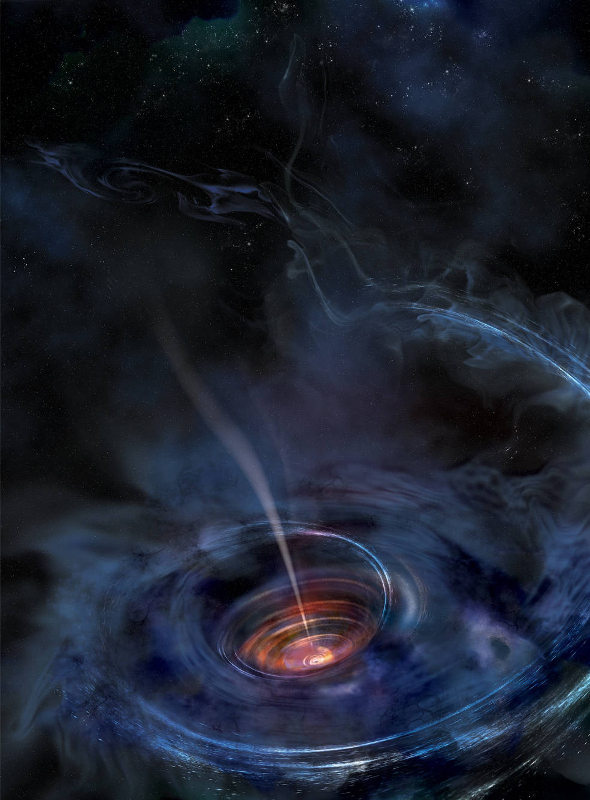
 Credit: NASA/Swift/Aurore Simonnet, Sonoma State University
Credit: NASA/Swift/Aurore Simonnet, Sonoma State University
Echoes of a Devoured Star
Stars which wander too close to a black hole's event horizon will disappear from our Universe entirely. But before they vanish, they emit a cry in X-rays, a signal marking their violent passing. One such X-ray outburst was detected by NASA's Swift observatory on March 28, 2011. The enormous outpouring of X-rays detected by Swift from this event signaled the destruction of a star by a previously dormant, million-solar mass black hole in a distant galaxy. But how exactly does a black hole tear a star apart? To better understand this process, astronomers did a careful re-analysis of the Swift observations, along with X-ray observations obtained by the XMM-Newton and Suzaku X-ray observatories. Astronomers employed a technique known as "reverberation mapping", which essentially means analyzing the echoes of X-ray outbursts at different energies and different times. Reverberation mapping allows astronomers to study the details of the accretion process, and by using this technique astronomers were able to determine the extent of the remnants of the torn-apart star, and better constrain the mass of the black hole as well. The image above shows an illustration of the transient accretion disk formed by the shredded star falling into the black hole's event horizon. Such studies of these "tidal disruption events" may one day allow astronomers to determine the masses and properties of large numbers of these otherwise hidden supermassive black holes, lurking in the night.
Published: June 27, 2016
<
HEA Dictionary ● Archive
● Search HEAPOW
● Other Languages
● HEAPOW on Facebook
● Download all Images
● Education ● HEAD
>

Each week the HEASARC
brings you new, exciting and beautiful images from X-ray and Gamma ray
astronomy. Check back each week and be sure to check out the HEAPOW archive!
Page Author: Dr. Michael F. Corcoran
Last modified Tuesday, 27-Feb-2024 10:15:12 EST


